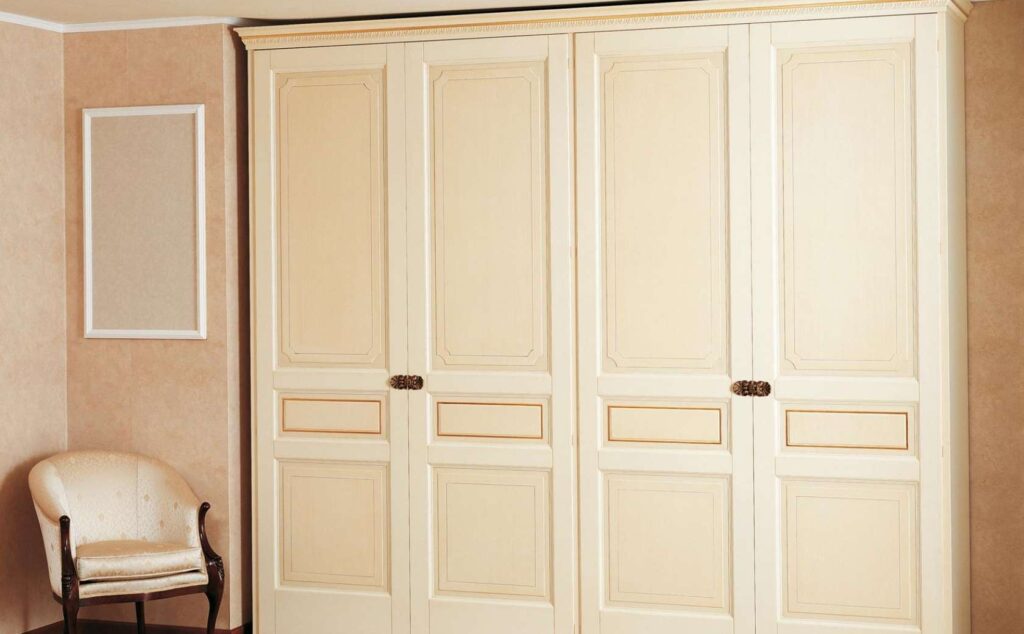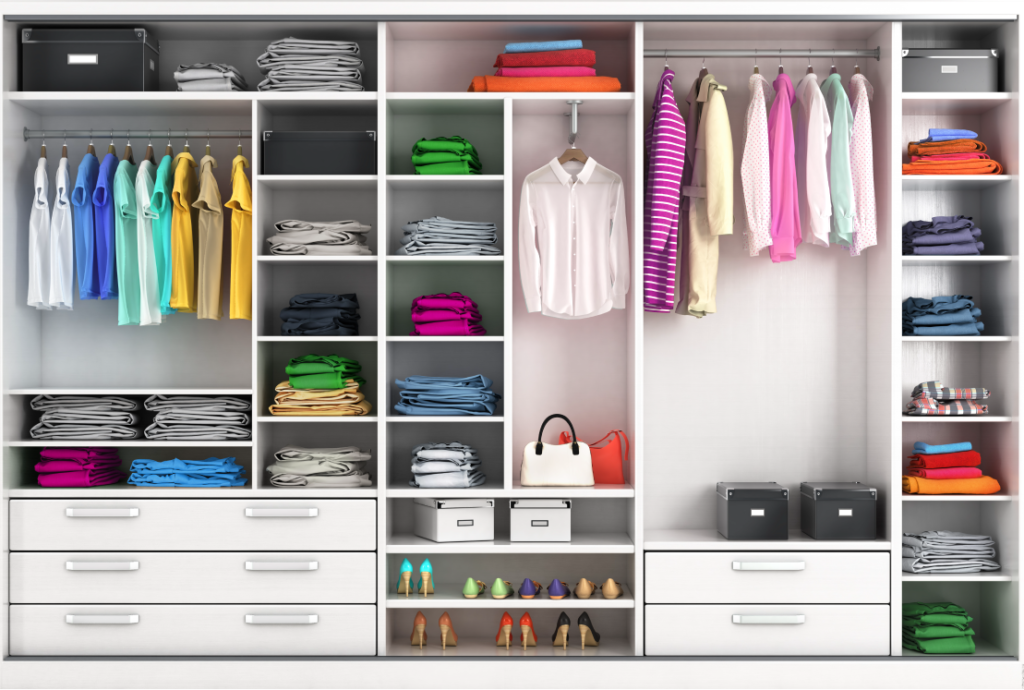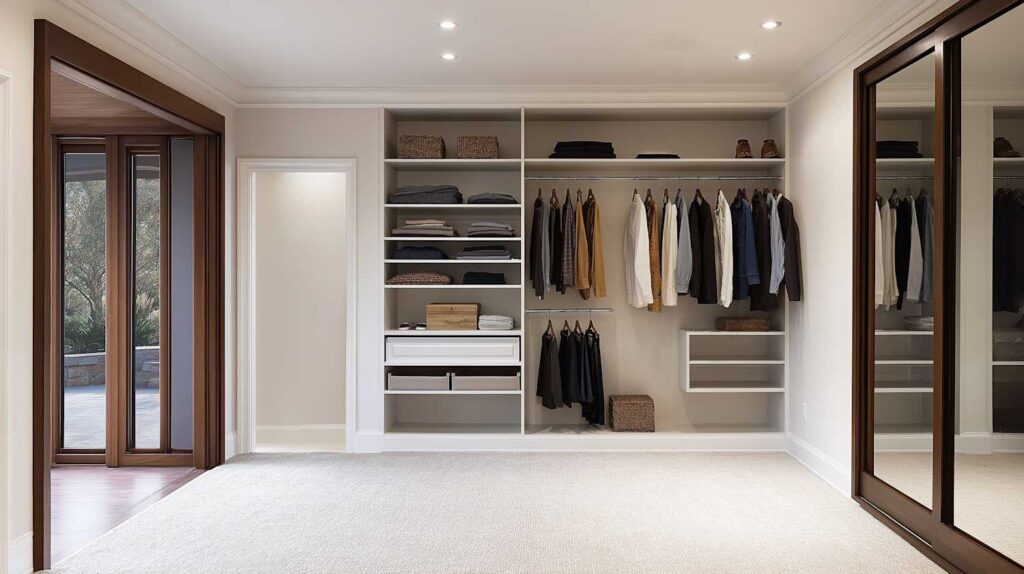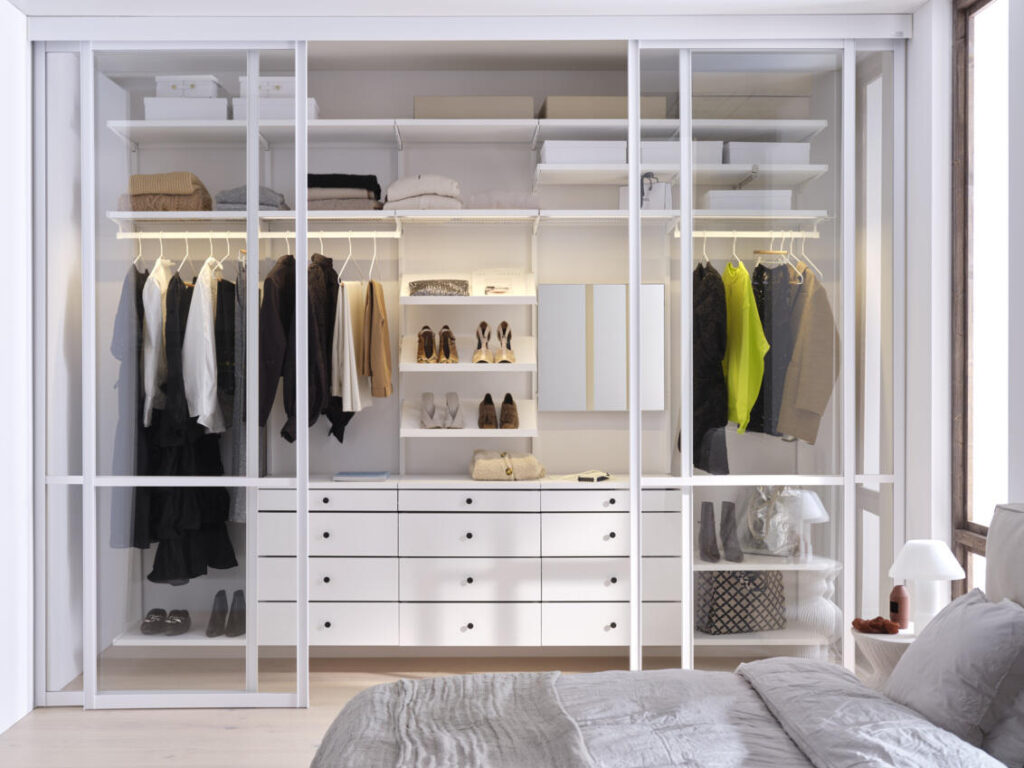Open any closet, and you’ll probably notice two things right away: too many clothes, and the same handful of items worn on repeat. Studies consistently show that the average person only wears 20% of their wardrobe 80% of the time, while the rest sits untouched, forgotten, or saved for “that day” that never comes. The aftermath? A constant cycle of overworn favorites, neglected garments, and wasted money on clothes that rarely see daylight.
The problem isn’t always about having too many clothes—it’s about actually seeing them and placing them so they’re not forgotten. Traditional wardrobes hide items at the back, making it easy to forget what you own. Meanwhile, laundry cycles and busy schedules encourage us to grab the same “easy” pieces over and over again. Slowly, this creates an imbalance: some clothes wear out quickly while others barely get used before they go out of style or no longer fit.
Fashion-conscious consumers often try digital closet apps like Stylebook or Cladwell, where you manually log your clothes and plan outfits. While useful in theory, they rely on consistent human effort, which quickly becomes a chore. Most users stop updating within weeks, leaving the apps underutilized. On the other end of the spectrum, big retailers like Zara and Uniqlo have experimented with RFID-enabled hangers to track stock in stores, proving the technology exists. Yet none of these systems translates into a seamless, automated solution for everyday wardrobes at home.
This is where the IoT-enabled Wardrobe / Closet Organizer manages your life for you. By blending smart sensors, AI, and mobile connectivity, it creates a living, digital inventory of your closet. Each time you remove or return a garment, the system logs usage. Over time, it builds a profile of your habits: what you wear most, what you forget, and when items might need rotation. Wait, isn’t that what an interested spouse does? Instead of waiting for you to remember that blazer tucked behind the sweaters, the system proactively suggests it—ensuring you get value from your entire wardrobe. Sweet deal, eh?
But it doesn’t stop at reminders. By combining environmental sensors (for humidity and temperature) with wear tracking, the organizer helps prevent damage to fabrics and prolong the garment’s lifespan. Add an AI styling assistant, and it can even suggest outfits tailored to the weather, your calendar events, or what hasn’t been worn in a while.
Closet organization has always been a manual task—hang, fold, and hope you remember what you own. With IoT, that changes. The closet itself becomes an active assistant, managing clothing rotation, protecting fabrics, and offering insights. Much like robot vacuums changed the way we think about cleaning, a smart wardrobe system has the potential to redefine how we approach clothing.
In short, the IoT-enabled wardrobe isn’t just about new technology (well, it kinda also is)—it’s about changing our relationship with fashion, time, and sustainability. It bridges the gap between fashion apps that require too much work and retail tech that feels out of reach, finally delivering a solution that belongs in every home.
The Problem With Traditional Wardrobes

Most of us believe the issue with our closets is a lack of space. No siree, the truth is, the problem runs deeper: organization, visibility, and usage tracking. Traditional wardrobes may store clothing, but they don’t help us manage it. That gap creates waste, stress, and lost value.
1. Forgotten Clothes at the Back
Every closet has “orphaned clothes,” so to speak—clothes buried so deep they’re forgotten for months or years. These might be impulse buys, seasonal pieces, or items pushed behind newer additions. The problem isn’t owning them—it’s remembering to wear them. Traditional wardrobes don’t offer visibility, so perfectly good outfits go unused until they’re out of fashion or no longer fit.
2. Over-Worn Favorites
On the flip side, most people fall back on the same reliable items again and again. Those favorite jeans or that go-to shirt end up in constant rotation, wearing out much faster than the rest of the wardrobe. Without tracking, we don’t realize the imbalance until the garment starts to fade, stretch, or tear.
3. Wasted Time in the Morning
You may call it indecisiveness, but we call it “decision fatigue,” and it is real. Many people spend 10–15 minutes every morning just deciding what to wear. When closets are cluttered and unorganized, this process gets longer and more stressful. Traditional wardrobes don’t provide suggestions, reminders, or guidance—they leave you staring at hangers, hoping for inspiration.
4. Laundry Mismanagement
Without usage tracking, it’s easy to overwash clothes. Some items go back into the laundry basket after a single short wear, while others stay unwashed longer than they should. This inconsistency reduces garment lifespan and wastes water, energy, and detergent.
5. No Insights Into Value
Clothes are one of the biggest recurring household expenses, yet most people have no idea which items truly give them value. Was that £150 jacket worth it if it was worn twice? Traditional wardrobes can’t answer that. Without data, buying decisions remain emotional, not practical—leading to regretful purchases and clutter.
6. Sustainability Blind Spots
Fashion waste is a global issue, with millions of tonnes of clothing ending up in landfills every year. At the consumer level, much of this waste comes from underuse. Traditional closets don’t encourage rotation or highlight underworn items, so people keep buying more while rarely wearing what they already own.
Why the Old System Fails
The core issue is that wardrobes are passive storage. They hold clothes but provide no feedback, no guidance, and no intelligence. They don’t help you balance usage, they don’t flag neglected items, and they don’t extend the life of garments.
In today’s world—where we use smart devices to manage everything from fitness to finances—it’s striking how little innovation has touched the closet. And yet, clothing is one of the most personal and expensive categories in our daily lives. The absence of smart wardrobe management isn’t just inconvenient—it’s a missed opportunity for saving money, reducing waste, and simplifying life.
What Is the Smart Closet Organizer?

What’s so special about it, you ask? Well, for starters, the IoT-enabled wardrobe isn’t just another storage solution—it’s a digital manager for your clothes. By combining sensors, smart hangers, and an AI-driven app, it turns your closet into an intelligent system that actively helps you get more value from what you already own.
1. Tracking What You Wear
At the heart of the system are smart hangers and garment tags. Each time you take an item off the hanger or return it, the system logs the activity automatically. Over time, it builds a record of what you wear most often, what’s been sitting idle, and how long items last before washing or replacement. Unlike apps that require manual input, the smart closet does this silently, in the background.
2. Suggesting Rotations
The system isn’t just about tracking—it’s about actionable insights. Using wear data, it suggests rotations to bring neglected items back into use. For example, if you’ve worn the same navy blazer three times this week but haven’t touched the grey one in two months, the app will suggest styling options for the grey blazer with pieces you already wear. This keeps your wardrobe feeling fresh without constant shopping.
3. Outfit Recommendations
By linking to your calendar, weather data, and personal style preferences, the smart closet becomes like your personal stylist. Heading to a client meeting? The app can suggest business-casual combinations you haven’t worn recently. A weekend picnic? It pulls lighter fabrics you haven’t touched in weeks. Over time, the AI learns your preferences and improves its recommendations.
4. Protecting Your Clothes
The system also monitors the environment inside your wardrobe. Humidity and temperature sensors flag conditions that could cause mold, mildew, or moth damage. Combined with usage data, it can recommend care actions like rotating knits out of storage or airing out rarely worn pieces. This prolongs garment lifespan and protects valuable items.
5. A Digital Wardrobe Inventory
Every tracked item forms part of a digital wardrobe library in the app. You can browse what you own without opening the closet, filter by category, and plan outfits ahead of time. For frequent travelers, this also means packing assistance—the app can suggest what to bring based on trip length, weather, and past choices.
6. Integration With Lifestyle
The system doesn’t live in isolation. It integrates with voice assistants (“Alexa, what should I wear today?”), smart mirrors for virtual try-ons, and even resale platforms like Depop or Vinted—flagging items you no longer use and helping you resell them easily.
The Big Picture
The Smart Closet Organizer isn’t about adding a seemingly needless gadget to your wardrobe—it’s about transforming clothing management from a manual, frustrating process into a streamlined, data-driven system. It ensures you get more value from every garment, reduces waste, and removes the daily stress of “what should I wear?”
Real-World Use Cases: How a Smart Wardrobe Fits Everyday Life

The true value of the IoT-enabled wardrobe isn’t in its sensors or app—it’s in how it changes daily routines and long-term clothing habits. Here are real-life scenarios that show how different users benefit.
1. The Busy Professional
Amir works in finance. His mornings are tight: gym at 6 a.m., shower at 7, out the door by 8. He often grabs the same two or three shirts because they’re clean and within reach. Within months, they look faded while other shirts remain untouched. He’s fit but also looks like he’s just hit the gym all the time!
With the smart wardrobe, Amir’s closet lights highlight a shirt that hasn’t been worn in weeks, paired with a suggested tie. His app also reminds him that one of his favorite shirts has already been worn three times this week and should rest. Instead of decision fatigue, he gets quick choices that balance freshness with professionalism.
2. The Fashion Enthusiast
Sophie loves fashion and often buys new pieces. But she admits that some items get lost at the back of her closet, still with tags, months later. She also finds herself unintentionally repeating outfits when meeting the same circle of friends.
The smart closet’s app not only logs what she wears but also flags items that haven’t been worn in 90 days. When Sophie is getting ready for dinner, it suggests styling her underused red blazer with a dress she wore last month. It even pulls in weather data—recommending breathable fabrics on hot days. For Sophie, it feels like having a personal stylist who makes sure every purchase pays off.
3. The Sustainability Advocate
Liam is passionate about reducing waste. He’s aware that the fashion industry contributes massively to landfill and pollution, and he wants to get more life out of his existing wardrobe.
The smart closet tracks how often each item is worn and washed, generating sustainability insights like “You extended the life of this pair of jeans by 6 months through balanced rotation.” It also flags items that haven’t been worn for a year, encouraging resale or donation. Liam uses the app’s resale integration to list an unused jacket directly on Vinted. For him, the wardrobe is not just tech—it’s a tool for conscious consumption.
4. The Family Household
Sarah is a mother of two school-aged children. Every season, she discovers clothes that no longer fit her kids—barely worn before being outgrown.
With the smart wardrobe, usage data makes the problem visible. The system logs which items the children wear regularly and which stay untouched. It also predicts when clothes will be outgrown based on usage and growth patterns. Sarah can donate unused clothes sooner, pass them to younger relatives, or sell them while they’re still in excellent condition. What has she achieved? Less waste and better value for money.
5. The Retail or Rental Business
Beyond homes, smart wardrobes also have commercial potential. Clothing rental companies like Rent the Runway or Nuuly depend on maximizing garment lifespan. With IoT-enabled hangers, they can track exactly how often each piece is worn and cleaned, predicting when it needs maintenance or retirement.
For high-end retailers, smart closets can be integrated into luxury experiences. Imagine a boutique offering customers an IoT wardrobe subscription that tracks their clothing usage and suggests complementary purchases. Instead of pushing random items, retailers would offer personalized, data-driven recommendations that align with the customer’s real lifestyle.
Why These Scenarios Matter
Across all these examples, the common theme is visibility and balance. Traditional wardrobes let items slip into the background. A smart wardrobe keeps every garment “active” in your digital inventory, making sure you wear what you own, protect your favorites, and save money in the long run.
The IoT-enabled wardrobe doesn’t just change closets—it changes clothing culture and mindsets.
Features & Benefits in Depth

If you think about it, the IoT-enabled wardrobe isn’t just storage with sensors—it’s more of a lifestyle upgrade. Here’s a detailed look at its core features and how they translate into real-world benefits.
1. Smart Tracking of Clothing Usage
Feature: Each item is tagged or hung on a smart hanger with sensors that detect when clothes are removed and returned. Data is logged automatically.
Benefit: No more guessing which clothes you actually wear. The system shows you accurate insights—helping you avoid waste, maximize purchases, and plan smarter shopping.
2. Outfit Rotation Suggestions
Feature: Using wear history, the system highlights underused garments and suggests them in new outfit combinations.
Benefit: Keeps your wardrobe feeling fresh, extends the life of overworn favorites, and helps you rediscover clothes you already own—saving money and cutting down on impulse buys.
3. AI-Powered Outfit Recommendations
Feature: The app integrates with your calendar, weather forecasts, and personal style data to recommend complete outfits for different occasions.
Benefit: No more morning stress over “what to wear.” Whether it’s a business meeting, casual outing, or rainy day, you get tailored suggestions that feel natural and stylish.
4. Environmental Protection for Clothes
Feature: Sensors inside the wardrobe monitor temperature and humidity, sending alerts if conditions could damage fabrics.
Benefit: Protects delicate garments from mold, mildew, or moths. Ideal for luxury wardrobes or seasonal storage, ensuring your clothes last longer.
5. Digital Wardrobe Inventory
Feature: Every garment becomes part of a digital library accessible through the app. Items can be filtered by type, color, season, or wear frequency.
Benefit: Makes planning outfits, packing for trips, and tracking usage effortless. You’ll always know what you have—even when away from home.
6. Sustainability Insights
Feature: The app tracks carbon and water savings based on extended garment lifespans and reduced overwashing.
Benefit: For eco-conscious users, this turns wardrobe management into a measurable sustainability practice, reducing waste and improving buying habits.
7. Multi-Platform Integration
Feature: Works with voice assistants (“Alexa, suggest an outfit”), smart mirrors for virtual try-ons, and even resale platforms.
Benefit: Seamlessly integrates into your smart home and fashion ecosystem, giving you full control and convenience without extra effort.
8. Lifestyle ROI
Feature: Available in three models—Starter, Plus, Pro—scaled to user needs.
Benefit: Whether you’re a minimalist, a fashion lover, or a family household, you can choose a version that fits your lifestyle and budget.
The Takeaway
By combining tracking, AI, protection, and insights, the IoT wardrobe transforms clothing management from lazy guesswork into efficient, guided, data-driven simplicity. It doesn’t just make your closet smarter—it makes your daily life smoother, your clothes last longer, and your style more intentional.
Comparison: Smart Closet vs. Traditional Wardrobes vs. Fashion Apps
When it comes to managing clothes, people rely on three approaches today: traditional wardrobes, fashion apps, or—soon—smart IoT closets. Here’s how they compare:
| Feature | IoT Smart Closet Organizer | Traditional Wardrobe | Fashion Apps (manual logging) |
| Clothing Tracking | Automatic via sensors/hangers | None | Manual entry by the user |
| Outfit Suggestions | AI-based, weather & calendar integrated | None | Limited, based on logged items |
| Rotation Reminders | Yes (flags unworn/overworn items) | No | Only if manually updated |
| Environmental Monitoring | Yes (temp & humidity sensors) | No | No |
| Inventory Access | Digital library via app | Physical only | Digital, but manual effort |
| Ease of Use | Automatic, passive | Easy storage, but no insights | High effort, often abandoned |
| Sustainability Impact | Extends garment life, reduces waste | Neutral | Neutral |
| Cost | £399–£899 (depending on model) | One-time furniture spend | Low or free, but time-intensive |
Analysis:
- Traditional wardrobes keep clothes safe but provide no intelligence.
- Apps help organize fashion digitally, but they fail because of manual upkeep.
- The IoT smart closet combines the best of both—automatic tracking, insights, and real-time guidance—without relying on human discipline.
Buying & Adoption Guide: Which Smart Closet Model Fits You?
The IoT-enabled wardrobe is designed to work for different types of users, from minimalists to fashion enthusiasts and families. To make it accessible, it comes in three versions: Starter, Plus, and Pro. Here’s how to decide which one is right for you.
1. Starter Kit – Simplicity First
The Starter Kit is the entry-level model. It includes a set of smart hangers or RFID tags with app integration. It tracks when clothes are worn and suggests simple rotations.
- Best for: Minimalists, young professionals, or first-time adopters of smart tech.
- Price: Around £399.
- Why choose it: Offers the core benefit—automatic tracking and reminders—without overcomplicating things. Perfect if you just want visibility into what you wear and what you don’t.
2. Wardrobe Plus – Smarter Integration
The Wardrobe Plus model expands on the Starter Kit with environmental monitoring (humidity/temperature sensors) and AI-powered outfit recommendations. It integrates with weather apps and your digital calendar to suggest what to wear on specific days.
- Best for: Busy professionals, families, or anyone with a medium-sized wardrobe.
- Price: £599–£699.
- Why choose it: Reduces morning stress, protects clothes from damage, and offers more personalized outfit ideas. A balance of practicality and intelligence.
3. Wardrobe Pro – Full Intelligence & Styling
The Pro version is a complete smart closet system. It includes all features of Plus, plus advanced AI styling, a digital wardrobe library, and integration with smart mirrors and resale platforms. It can also analyze clothing value—showing cost-per-wear data and sustainability metrics.
- Best for: Fashion enthusiasts, luxury wardrobe owners, sustainability advocates, and businesses like rental platforms.
- Price: £899+.
- Why choose it: Provides the deepest insights into clothing usage, outfit planning, and garment care. For people serious about fashion or sustainability, this model becomes a long-term wardrobe investment.
How to Decide
- If you just want to stop overwearing favorites and start rotating better → go with the Starter Kit.
- If you need daily guidance and protection for your wardrobe → Wardrobe Plus offers the best balance.
- If you want a complete ecosystem with AI styling and resale integration → the Pro model makes the most sense.
The Investment Case
Think about what you spend annually on clothes. For many, it’s hundreds—if not thousands—of pounds. Yet much of that investment goes unused as elitely dressed people in finance like to call: sunk cost. A smart closet helps ensure you get full value from every item, extends garment lifespan, and reduces wasteful purchases. Over time, it pays for itself—not just in money, but in saved time, reduced stress, and smarter lifestyle choices.
Consumer Decision Guide: Should You Invest in a Smart Closet?
Deciding whether to upgrade from a traditional wardrobe to an IoT-enabled smart organizer comes down to one question: what do you want your clothes to do for you? If a closet is only storage, then the old way works. But if you want your wardrobe to save you time, money, and stress while extending the life of your clothes, then a smart system becomes a game-changer.
For the Busy Professional
If your mornings are already rushed, you don’t have time to experiment with outfits. A smart closet takes the guesswork out of dressing. By logging what you’ve worn and combining it with weather and calendar data, it suggests the best outfits instantly. No more decision fatigue, no more repeating the same look twice in a week.
For the Fashion Lover
If you love buying clothes but often forget pieces in the back of your closet, a smart wardrobe is your personal assistant. It ensures every purchase gets worn and highlights items you haven’t touched in months. Instead of buying more, you rediscover what you already own—making your wardrobe feel endless without constant shopping.
For the Sustainability Advocate
If reducing waste matters to you, a smart closet provides a measurable impact. Balancing rotations prevents overwear and extends garment lifespan. It also flags clothes you no longer wear, making resale or donation easier. Over time, this reduces both personal waste and environmental impact—aligning fashion with conscious living.
For Families
If you’re managing children’s wardrobes, the system gives visibility into what’s actually worn. This means fewer surprises when kids outgrow barely used clothes. It also ensures family budgets stretch further by helping you maximize existing items instead of buying duplicates or replacements too soon.
For Businesses
Retailers, rental platforms, and even luxury boutiques benefit from data. Tracking garment usage helps predict wear-and-tear, optimize rotations, and improve customer experiences. For businesses, this isn’t just convenience—it’s operational efficiency and brand value.
The Value Perspective
Yes, the upfront cost of £399–£899 seems higher than a traditional wardrobe. But think about the hidden costs of the old system:
- Clothes that wear out too quickly.
- Purchases that stay unworn.
- Time wasted every morning deciding what to wear.
- Stress from clutter and lack of visibility.
When you calculate the return on investment, a smart closet pays for itself in a year or two. Beyond that, it continues delivering value every day through time savings, reduced stress, and better clothing usage.
Final Thought
If you see your wardrobe only as a storage space, you won’t need this. But if you see clothing as part of your lifestyle, identity, and daily confidence, then the IoT-enabled wardrobe organizer is the natural next step. It transforms a passive closet into an active and caring partner—guiding your choices, protecting your garments, and ensuring you get the most out of what you already own, Because in the end, style isn’t just about what you wear. It’s about how well you use what you have.
Conclusion:
For decades, closets have served one purpose: storing clothes. But in a world where nearly everything in our homes has become connected and intelligent, it’s time for wardrobes to evolve too. The IoT-enabled wardrobe organizer may sound “futuristic,” but it isn’t just about sensors, apps, or AI styling—it’s about transforming how we use and value our clothes with the thought of the future.
By tracking usage, suggesting rotations, and offering personalized outfit guidance, the system solves real-life frustrations: forgotten clothes, overworn favorites, wasted time, and wasted money. It makes fashion practical, sustainable, and enjoyable again. And for sustainability advocates, it turns clothing care into a conscious, measurable practice.
Yes, we know, it’s an investment. But compared to the thousands we spend on clothes each year, or the countless hours lost to decision fatigue and disorganization, the value is undeniable. More importantly, it shifts our relationship with fashion—from reactive to proactive, from cluttered to curated.
You could say, the future of clothing isn’t just about new trends or fabrics. It’s about smarter management. And with IoT closets, the future is already hanging in front of us.


